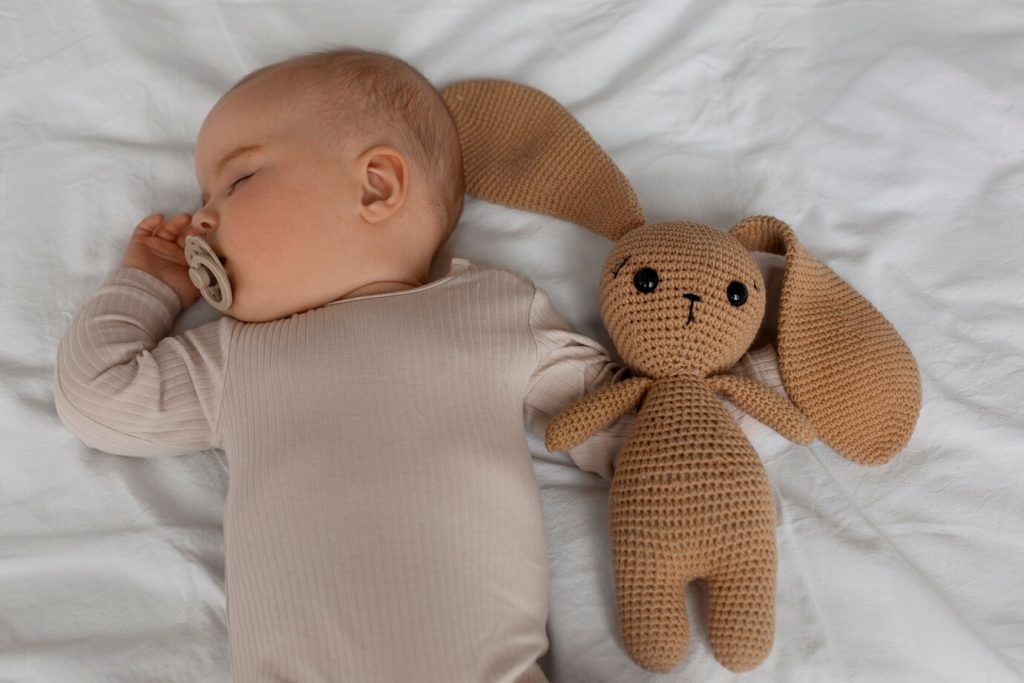If you’re parenting a toddler, you probably know how tricky bedtime can be—especially when your child is learning to fall asleep on their own. The good news is, there are plenty of helpful ways to make toddler sleep a little smoother. From gentle routines to calming strategies, these toddler sleep techniques can make a real difference. With a bit of consistency and lots of love, peaceful nights are within reach. Keep reading to learn how these sleep tips can work wonders in your home.
Table of Contents
Understanding Toddler Sleep Training
Sleep plays a big role in helping your toddler grow and stay healthy. Most toddlers need about 11 to 14 hours of rest each day, including one or two short naps. But as many parents know, bedtime can sometimes be a bit of a challenge.
That’s where toddler sleep training comes in. It’s a gentle way to teach your little one how to settle down and drift off to sleep without needing you right by their side. One of the main goals is to help your child learn how to soothe themselves and stay in bed calmly, even after waking up during the night.
Toddler sleep training is all about slowly giving your child the tools to fall asleep on their own. It doesn’t look the same for every family—what works well for one toddler might not work for another. So don’t worry if it takes a bit of trial and error to find the right approach.
The key is staying patient, consistent, and reassuring. With time and love, your toddler will learn to feel secure and cozy at bedtime, making the whole process a lot smoother for everyone.
Why Your Toddler Might Have Trouble Falling Asleep or Staying in Bed
Before you begin any kind of toddler sleep training, it’s helpful to understand what might be getting in the way of a good night’s rest. There are many reasons a toddler may suddenly start having trouble at bedtime, even if they were sleeping well before.
Sometimes, a big change at home can throw things off. Whether it’s moving to a new house, starting preschool, a new sibling arriving, or even just switching beds, any of these shifts can leave your little one feeling unsure or unsettled. That can make it tough for them to relax and get the toddler sleep they need.
Other times, toddlers simply don’t want to miss out on anything fun. They may feel like everyone else is still up enjoying themselves, and they want to be part of it too—especially if they have older siblings around. This fear of missing out can make bedtime seem unfair or boring in their eyes.
Your toddler’s imagination is also starting to grow. While that’s a wonderful part of development, it can also bring bedtime fears, like being afraid of the dark or thinking there might be something scary hiding in the room.
And don’t forget about separation anxiety. If your child is worried about being away from you, falling asleep alone can be hard. These feelings are normal and very common during the toddler years.
Toddler sleep habits can shift with time, and it’s totally okay if things don’t always go perfectly. With some understanding and gentle guidance, you can help your little one get back on track.
10 Gentle Toddler Sleep Techniques That Truly Work
Helping your little one settle into a restful bedtime can feel like a challenge, but there are many toddler sleep strategies that really make a difference. These gentle, consistent methods can turn tough nights into peaceful ones. Here’s how to guide your child through the process of learning healthy toddler sleep habits—step by step, with lots of love.

1. Stick to a Peaceful and Predictable Bedtime Routine
Creating a gentle bedtime routine is one of the most important steps for encouraging healthy toddler sleep. When you follow the same steps each night in the same order, it helps your child feel safe, relaxed, and ready to drift off.
Start by choosing a regular bedtime and sticking with it—even on weekends. Toddlers feel more secure when they know what to expect, and a consistent sleep schedule helps their body know when it’s time to wind down.
In the hour before bed, keep things calm and quiet. Turn off screens, avoid exciting games, and focus on slow, soothing activities. About 20–30 minutes before sleep, begin your routine. This could include:
- A warm, relaxing bath
- Getting into pajamas and brushing teeth
- One last potty trip or diaper change
- Dimming the lights
- Quiet moments together reading, singing lullabies, or cuddling a favorite stuffed animal
Keep these moments cozy and comforting. It’s a good idea to do the routine in your child’s bedroom so they see it as a welcoming and peaceful space. Make sure their room is a comfortable temperature, and offer a night-light if that helps them feel more at ease.
If your toddler has a special blanket or toy they love, be sure it’s nearby—this can be a great source of comfort and help reduce bedtime worries. These simple, loving steps support better toddler sleep and help your child feel safe and cared for as they fall asleep.
2. Comfort Gently Without Encouraging Nighttime Crying
Waking up during the night is common for young children. If your toddler calls out to you, it’s okay to check on them—but try to keep your response calm and brief. Speak softly, keep the lights low, and let them know everything is alright.
The key here is to provide comfort without turning the wake-up into a long visit. You want your child to know you’re there for them, but also that it’s still time for sleep.
In the beginning, you may need to go into their room to offer comfort. But over time, try to move toward soothing them from the doorway or just outside the room. This helps build confidence and supports independent toddler sleep.
While it might be tempting, try not to let your toddler come into your bed to settle down. The goal of toddler sleep training is to help them learn how to fall back asleep on their own. Staying consistent with this approach will lead to more peaceful nights for everyone.
3. Gently Guide Your Toddler to Stay in Bed
Once your toddler moves from a crib to a regular bed, they might take the opportunity to get up and wander after bedtime. To support healthy toddler sleep, it’s important to teach your child that staying in bed is part of the routine.
If your little one gets out of bed, calmly walk them back without a fuss. Keep your response simple and quiet—just a gentle reminder like, “It’s time to stay in bed now.” Avoid turning it into a conversation or showing frustration. With time and consistency, your child will learn that leaving the bed won’t lead to more attention or fun.
If your toddler is potty training, a bathroom trip may be a valid reason to get up. In that case, guide them back to bed right afterward and keep things low-key to avoid turning the trip into a distraction. By staying firm and kind, you’re helping build strong toddler sleep habits.
4. Try the “In and Out” Check-In Method
This approach is great for children who need reassurance but are learning to fall asleep on their own. When your toddler cries at bedtime, go in for a quick check—just long enough to say something comforting like, “You’re okay, it’s time to sleep.”
Don’t pick them up or linger. These quick visits show your toddler that you’re nearby and that bedtime is safe and predictable. At first, you may need to repeat the check-ins several times, but over a few nights, your toddler will start settling more easily.
This method gently builds your child’s confidence and supports the long-term goal of independent toddler sleep without leaving them feeling abandoned.
5. Use the “Disappearing Chair” to Ease Separation
If your child gets upset before you even leave the room, the “disappearing chair” method can help. Start by sitting next to their bed as they fall asleep. The next night, move the chair a little farther away—maybe to the foot of the bed. Each night, keep shifting the chair a bit more until you’re sitting outside the room.
This toddler sleep technique helps your child feel safe while learning that they can fall asleep even when you’re not right next to them. Over time, they’ll become more comfortable sleeping on their own.
Keep in mind, though, that some toddlers may find the frequent changes a little tricky. Try to move at a pace that works for your child, offering comfort and encouragement along the way.
6. Try the “Countdown” Goodnight Method
This gentle toddler sleep strategy helps ease separation by gradually reducing the time you spend with your child at bedtime. It’s all about building trust while encouraging independence.
Start by staying in the room for a set amount of time—maybe 20 minutes the first night. Five minutes before you leave, let your toddler know, “I’ll stay five more minutes.” Each night, you shorten the total time you spend there, always giving that five-minute reminder in a positive tone.
For example, on the second night, you might stay for 15 minutes and give the same five-minute warning at the 10-minute mark. Eventually, your toddler will get used to shorter visits and feel confident falling asleep without you in the room.
Using a timer can also be helpful. It gives your child a clear cue when it’s time to say goodnight, reducing the chance of stalling or pleading. This simple technique helps build strong toddler sleep habits over time.
7. Use “Just a Second” Practice to Build Confidence
This technique starts during the day and helps teach patience in a relaxed way—perfect for encouraging calm bedtime behavior. Begin by telling your toddler, “Hold on, I’ll be right back,” and step away for just a few seconds. Praise them warmly when they wait without fussing.
At bedtime, you can say something like, “I’m just checking the hallway—I’ll be back in a moment.” Slowly increase the time you’re gone as your toddler gets used to waiting. This helps them feel safe and supported, even when you’re not right there beside them.
This approach works especially well if your child has trouble being alone at night. It helps them get comfortable with short periods apart, a valuable part of successful toddler sleep routines.

8. Make Bedtime a Fun “Deal”
This creative toddler sleep method turns bedtime into a positive challenge. Give your child two “sleep cards” or “tickets” at the start of the night. Each time they call out to you, they use one card. If they still have both cards in the morning, they earn a reward—like a sticker or extra story time the next night.
This approach motivates toddlers to stay in bed by giving them a fun goal to work toward. Don’t forget the power of praise! Even if your child only keeps one card, let them know you noticed their effort. Say something like, “You did so well only using one card! Maybe tomorrow you’ll keep both.”
Rewards and encouragement help build positive toddler sleep habits. Over time, your child will feel proud of their progress and more motivated to stay in bed calmly all night.
9. Practice Makes Bedtime Easier
One fun way to ease your child into better bedtime habits is by practicing the bedtime routine during the day. This playful toddler sleep strategy helps your little one get comfortable with the steps before it’s actually time to sleep.
Pick a calm moment in the morning or afternoon, and do a “pretend bedtime.” You both can put on pajamas, brush your teeth, choose a bedtime story, and even hop into bed together for a practice round. Add some laughter with pretend snoring or a game to see who remembers each bedtime step.
The idea is to make the process enjoyable so your child starts to associate bedtime with positive feelings. Talk to your toddler about what happens at night and gently ask if anything feels scary or uncomfortable. Some children might share that they’re afraid of the dark or certain shadows in the room. Making small changes—like adding a hallway night light or moving spooky-looking toys—can make a big difference in toddler sleep confidence.
Rehearsing bedtime builds familiarity, lowers anxiety, and turns bedtime into something to look forward to.
10. Transitioning to the “Big Kid” Bedroom
Moving from a crib in your room to a bed in their own space is a big step in toddler sleep development. For many toddlers, this change feels exciting and a little overwhelming at the same time.
Help your child feel proud about becoming a “big kid” by making the move feel special. Start by letting them take naps in their new room during the day. Once naps go smoothly, you can slowly add bedtime there too.
Let your toddler be part of the process—maybe they can pick out a fun new blanket or stuffed animal to keep them company. Praise them often for staying in their new bed and talk about how grown-up they’re becoming. These little celebrations help boost their confidence and make toddler sleep transitions easier.
If your child struggles with the new setup, that’s okay. Revisit some of the other gentle sleep training methods, like sitting close or doing quick check-ins, to help your child feel safe. With consistency and support, they’ll soon settle into their new room and enjoy a more independent bedtime routine.
Wrapping It All Up
Teaching your toddler to fall asleep on their own is a journey that takes time, love, and a lot of patience. While toddler sleep training may come with some ups and downs, it’s all part of helping your child build healthy sleep habits that will benefit them for years to come.
The most important thing is to be consistent. Once you choose a method that feels right for your family, try to stick with it. Many parents notice a big difference in toddler sleep after just a few nights of following a steady routine.
Keep in mind that setbacks can happen—changes in routine, travel, or even feeling unwell might shake things up. That’s totally normal. But the good news is, you’ll already have the tools and confidence to gently guide your little one back to restful nights.
You’re doing an amazing job, and your support means the world to your child. You’ve got this!
Read our latest article: “Benefits and Challenges of Raising Bilingual Children“
Follow us
